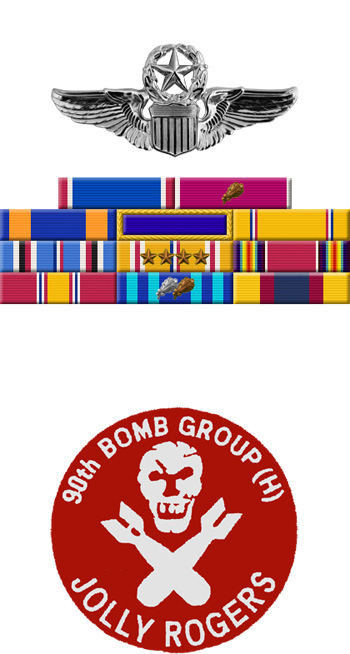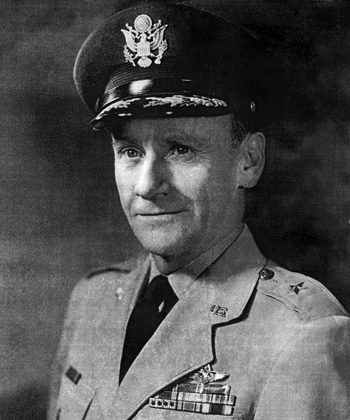
|
Ralph E. Koon |
 |
|||
| Rank, Service | ||||
Brigadier General O-7, U.S. Air Force |
||||
| Veteran of: | ||||
|
||||
| Tribute: | ||||
Ralph Koon was born on December 23, 1904, in Bolivar, Missouri. He entered the U.S. Military Academy at West Point on July 1, 1924, and was commissioned a 2d Lt of Cavalry on June 9, 1928. Lt Koon immediately began flight training and was awarded his pilot wings at Kelly Field, Texas, in June 1929, and then served at Mitchel Field, New York; Luke Field, Hawaii; Bolling Field, Washington, D.C.; Langley Field, Virginia; and Westover Field, Massachusetts. During this time he participated in operational testing of the YB-17 Flying Fortress while serving with the 2nd Bomb Group at Langley Field. After attending the Air Corps Tactical School at Maxwell Field, Alabama, from 1938 to 1939, Col Koon commanded the 18th Bomb Squadron at Westover Field from June 1941 to February 1942, and then the 34th Bomb Group at Pendleton Field, Oregon, from February to July 1942. He then served as commander of the 90th Bomb Group in Australia and then in New Guinea from November 1942 to July 1943, followed by service on the staff of 2nd Air Force at Colorado Springs, Colorado, from July 1943 to April 1944. His next assignment was as commander of the 46th Bombardment Operational Training Wing at Ardmore Army Air Field, Oklahoma, which was responsible for training all B-17 replacement crew training, from April 1944 to May 1945, followed by service on the staff of 4th Air Force at San Francisco, California, from May 1945 to March 1946. Col Koon attended the first class of the Air War College at Maxwell Field, Alabama, from September 1946 to June 1947, and then remained on the faculty staff as Deputy Commandant of the Air War College until August 1948. He attended National War College in Washington, D.C., from August 1948 to June 1949, and then served as Chief of Staff of Alaskan Air Command from June 1949 to July 1952. His next assignment was as Executive Officer for the Director of Operations, Headquarters U.S. Air Force in the Pentagon from August to December 1952, followed by service as Deputy Director of Operations at Headquarters U.S. Air Force from December 1952 to July 1956. Gen Koon next served as Vice Commander of Pacific Air Forces at Hickam AFB, Hawaii, from July 1956 to June 1957, and then as Assistant Chief of Staff for Operations of Pacific Air Forces from July 1957 until his retirement from the Air Force on August 1, 1958. After his retirement, he served as a consultant for the Rand Corporation. Ralph Koon died on November 20, 1989. |
||||
|
||||

